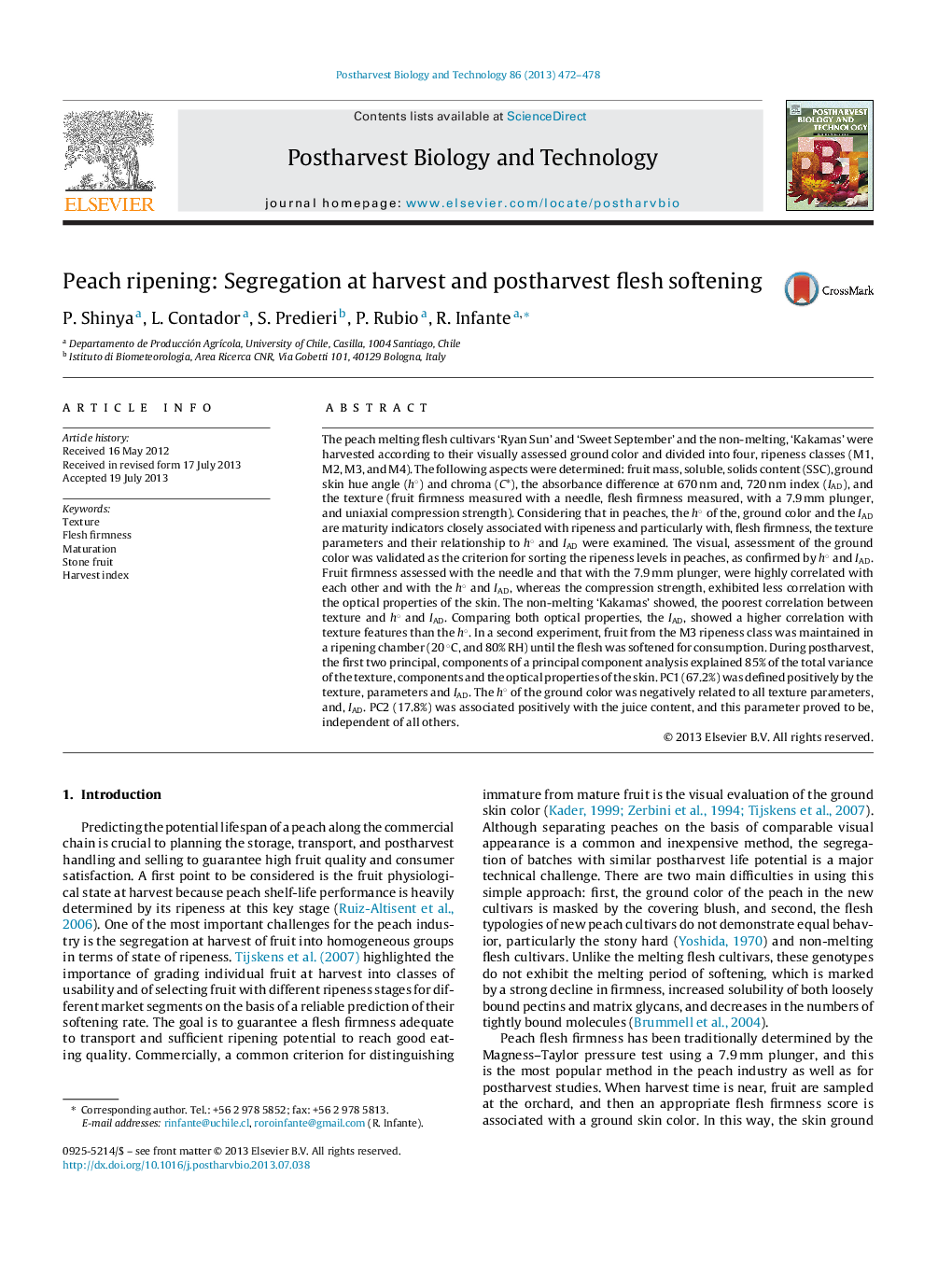| کد مقاله | کد نشریه | سال انتشار | مقاله انگلیسی | نسخه تمام متن |
|---|---|---|---|---|
| 6378821 | 1625008 | 2013 | 7 صفحه PDF | دانلود رایگان |
عنوان انگلیسی مقاله ISI
Peach ripening: Segregation at harvest and postharvest flesh softening
ترجمه فارسی عنوان
رسیدن هلو: جداسازی در هنگام برداشت و پس از برداشت گوشت نرم شدن
دانلود مقاله + سفارش ترجمه
دانلود مقاله ISI انگلیسی
رایگان برای ایرانیان
کلمات کلیدی
بافت، استحکام گوشت، بلوغ، میوه سنگ شاخص برداشت،
موضوعات مرتبط
علوم زیستی و بیوفناوری
علوم کشاورزی و بیولوژیک
علوم زراعت و اصلاح نباتات
چکیده انگلیسی
The peach melting flesh cultivars 'Ryan Sun' and 'Sweet September' and the non-melting, 'Kakamas' were harvested according to their visually assessed ground color and divided into four, ripeness classes (M1, M2, M3, and M4). The following aspects were determined: fruit mass, soluble, solids content (SSC), ground skin hue angle (h°) and chroma (C*), the absorbance difference at 670 nm and, 720 nm index (IAD), and the texture (fruit firmness measured with a needle, flesh firmness measured, with a 7.9 mm plunger, and uniaxial compression strength). Considering that in peaches, the h° of the, ground color and the IAD are maturity indicators closely associated with ripeness and particularly with, flesh firmness, the texture parameters and their relationship to h° and IAD were examined. The visual, assessment of the ground color was validated as the criterion for sorting the ripeness levels in peaches, as confirmed by h° and IAD. Fruit firmness assessed with the needle and that with the 7.9 mm plunger, were highly correlated with each other and with the h° and IAD, whereas the compression strength, exhibited less correlation with the optical properties of the skin. The non-melting 'Kakamas' showed, the poorest correlation between texture and h° and IAD. Comparing both optical properties, the IAD, showed a higher correlation with texture features than the h°. In a second experiment, fruit from the M3 ripeness class was maintained in a ripening chamber (20 °C, and 80% RH) until the flesh was softened for consumption. During postharvest, the first two principal, components of a principal component analysis explained 85% of the total variance of the texture, components and the optical properties of the skin. PC1 (67.2%) was defined positively by the texture, parameters and IAD. The h° of the ground color was negatively related to all texture parameters, and, IAD. PC2 (17.8%) was associated positively with the juice content, and this parameter proved to be, independent of all others.
ناشر
Database: Elsevier - ScienceDirect (ساینس دایرکت)
Journal: Postharvest Biology and Technology - Volume 86, December 2013, Pages 472-478
Journal: Postharvest Biology and Technology - Volume 86, December 2013, Pages 472-478
نویسندگان
P. Shinya, L. Contador, S. Predieri, P. Rubio, R. Infante,
